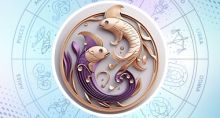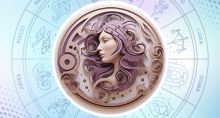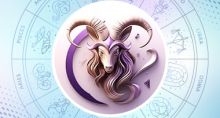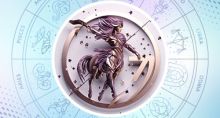What Is Lalitha Sahasranama Pooja Vidhanam
Goddess Lalita Tripura Sundari, also known as Kamakshi, Rajarajeshvari, and Shodashi, is a Hindu goddess and the main aspect of the supreme goddess Mahadevi who is venerated in Shaktism. She is also one of the Dasa Mahavidyas.
Shakta texts like Lalita Sahasranama and Soundarya Lahari sing her praises. She is Adi Parashakti in Lalitopakhyana of Brahmanda Purana.
The Srikula tradition in Shaktism holds that Tripura Sundari is the the supreme divinity of Hinduism and the primary goddess of Sri Vidya.
Goddess Lalita is sensuous, self-willed, and independent. One of her names is Kameshvari (“empress of desire”). She is also the devoted wife of Shiva, who represents pure consciousness. She exists in a state of perfect harmony, always benevolent and full of compassion for all beings.
In the Yoga tradition, Lalita is a beautiful young woman holding five arrows of long-stemmed flowers, a sugarcane bow, a noose, and a goad. The arrows represent the five senses, and the bow represents our mind. When we offer our senses to the Goddess and our thoughts are focused on the Divine, our life becomes blissful. But when we pause on the spiritual path, distracted by many things, Lalita prods us along, albeit gently, with her goad. If we resist, she lassos us with her noose and pulls us back to her.
The Goddess Who Plays
The deeper meaning of Goddess Lalita’s play with her devotees (her name denotes “she who plays”) is laid bare in the Brahmanda Purana. This is a 1000-year-old text from South India. The most famous part of this text, known as “The Glory of Lalita,” narrates the following tale.
Shiva was meditating and in the midst of his ascetic practices when he suddenly felt feelings of lust. Opening his 3rd eye, he looked around to see what had disturbed him. His eyes fell on Kama, the god of love, who had sent an arrow of desire at him. Instantly, a fire from Shiva’s 3rd eye reduced Kama to ashes. Then Shiva resumed his meditation.
From the ashes arose a demon. His name was Bhanda, and he wanted power, wealth, and sensual indulgence. Bhanda was blessed with an extraordinary power. When he fought an enemy, half his enemy’s power would be transferred to Bhanda directly.
Bhanda soon became a powerful king, conquering many lands. Sage Narada warned the gods of the grave threat that Bhanda posed to them. He advised them to worship Goddess Lalita, who alone could protect them from Bhanda.
Bhanda attacked Lalita with many lethal weapons. They included fear, apathy, illness, materialism, and the destruction of the sacred teachings. Lalita had her own weapons - courage, good health, spiritual insight, compassion, and enlightened spiritual mentors. At last, Bhanda unleashed all the forces of destruction that had the power to annihilate human society. Then, from the tips of Lalita’s fingers emerged the great saints who manifested on earth to restore Dharma.
Towards the end of their confrontation, Bhanda unleashed his most terrifying missile - Mahamoha, or “the supreme delusion.”. Lalita destroyed it with her own weapon, called Shambhava, or “divine awareness.” Then she overpowered Bhanda, who represented selfish lust born from the ashes of love, with Maha Kameshvara or “pure divine love’ which is the most powerful force in the universe.
Goddess Lalita’s arrows are long-stemmed flowers. She conquers her foes not with anger but with love. The yogic path to Lalita is Sri Vidya (“The Supreme Science”).
Lalita Sahasranama Pooja Vidhanam
Lalita Sahasranama Stotram is found in the Brahmanda Purana. It praises Goddess Lalita using her 1,000 names and attributes.
This Pooja Vidhanam was given by Shiva to his mount, Nandi. Nandi gave it to Hayagriva, who gave it to Agastya. It is very powerful and has many benefits when one chants it with devotion.
The Pooja includes several rituals like Ganapati Pooja, Sodasupachara Pooja, and Parayanam. Friday, Ashtami, Navami (during Navratri), or any other auspicious day is ideal for performing this Pooja. Shukla Paksha Panchami, Shukla Paksha Shasti, and Ayilyam/Aslesha Nakshatra day in the Hindu calendar are also good days. When Shukla Paksha Shasti and Aslesha Nakshatra coincide, it is extremely auspicious. During the Pooja, the Stotram is chanted.
How to Perform the Pooja
- The idol of Goddess Lalita should have two hands.
- It is ideal to perform the Pooja in the evening.
- Take a bath before the Pooja and offer prayers to Ganesha.
- Place the goddess’ idol on a rose or red-colored cloth.
- The Pooja should be done facing the north direction.
- Light a lamp (using cow ghee) and some incense sticks of chandan (sandalwood).
- Offer sweets and pink-colored flowers to the goddess.
- Offer gulal and ithar.
- Offer bhog/Neivedya (preferably kheer) to the goddess.
- After the Pooja, offer the bhog to a married woman and then to family and friends.
- Chant the Mantra, Aim Hreem Lalithaye Namah (from the Lalita Sahasranama)108 times.
Special Offerings
- Offer wheat flour to the goddess and donate it to the needy later. Or, use the flour to make rotis and offer it to cows.
- Use ghee and pink-colored wicks. Lighting six-faced lamps can help attain prosperity.
- Offer curd and honey to the goddess. Spread it over the roti and give it to cows. This can help lovers unite.
Benefits of Lalita Sahasranama Pooja Vidhanam
- It bestows a happy life by eliminating all obstacles and hardships.
- It nullifies the effects of malefic planets.
- It can remedy the effects of evil eyes, curses, black magic, etc.
- It gets rid of diseases and fevers.




















